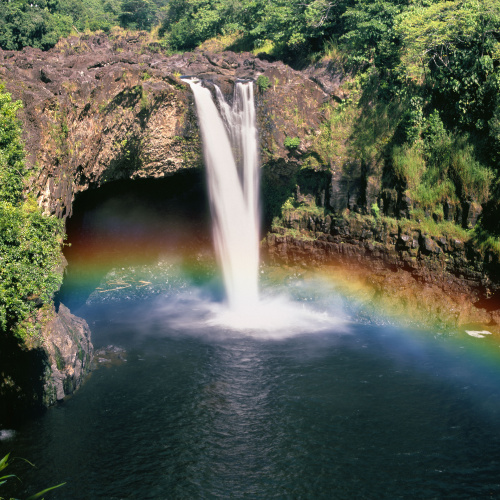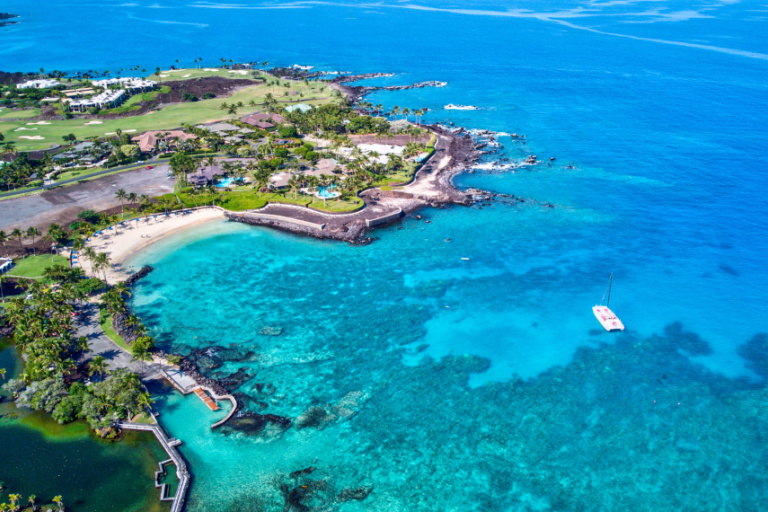
Michael Warwick/Shutterstock
When Is the Best Time to Visit The Big Island?
The best time to visit the Big Island of Hawaii is during the shoulder seasons of April to June and September to October. During these months, the weather is generally mild and sunny, with fewer crowds and lower prices than during the peak summer season (July and August).
Here are some of the benefits of visiting the Big Island during the shoulder seasons:
- Mild weather: The Big Island has a tropical climate, with warm summers and mild winters. The shoulder seasons offer pleasant temperatures, making them ideal for sightseeing, exploring, and enjoying the outdoors.
- Smaller crowds: The shoulder seasons are less crowded than the peak summer season, so you’ll be able to enjoy the Big Island’s popular tourist attractions without having to deal with large crowds. This is especially important if you’re visiting popular destinations like Hawaii Volcanoes National Park, Mauna Kea Observatories, and Pu’uhonua o Honaunau National Historical Park.
- Lower prices: Prices for flights, accommodation, and activities are generally lower during the shoulder seasons than during the peak summer season. This means you can save money on your trip without having to sacrifice quality.
Here are some specific examples of how you can enjoy the most of the Big Island during the shoulder seasons:
- Spring (April to June): The weather in spring is typically sunny and mild, with occasional showers. This is a great time to visit for exploring Hawaii Volcanoes National Park, hiking Mauna Kea, and attending the Merrie Monarch Festival in Hilo.
- Autumn (September to October): The weather in autumn is also typically sunny and mild, with occasional showers. This is a great time to visit for seeing the humpback whales off the coast, visiting the Pu’ukoholā Heiau National Historic Site, and attending the Kona Coffee Cultural Festival in Kona.
While there are many great times to visit the Big Island, if you’re looking for the best weather and the most opportunities to enjoy the island’s outdoor activities, then we recommend visiting during the shoulder seasons of spring and autumn.
 Average Temperatures by Month
Average Temperatures by Month
|
Jan |
Feb |
Mar |
Apr |
May |
Jun |
Jul |
Aug |
Sep |
Oct |
Nov |
Dec |
| Fahrenheit |
73°
|
73°
|
74°
|
75°
|
76°
|
78°
|
79°
|
79°
|
78°
|
77°
|
76°
|
74°
|
| Celsius |
23°
|
23°
|
23°
|
24°
|
24°
|
26°
|
26°
|
26°
|
26°
|
25°
|
24°
|
23°
|
Climate in The Big Island
Summer Season in The Big Island
Summers on the Big Island are warm and relatively dry, especially on the western (Kona) side, with temperatures typically ranging from 25°C to 30°C (77°F to 86°F). This season is characterized by sunny days and mild trade winds, making it ideal for beach activities, snorkeling, and exploring the island’s volcanic landscapes. The eastern (Hilo) side is wetter, offering lush, green scenery.
Rainy Season in The Big Island
The Big Island experiences its rainy season roughly from November to March. The rain is more frequent and intense on the Hilo side, which is one of the wettest areas in Hawaii, contributing to its rich tropical forests. In contrast, the Kona side receives less rainfall and maintains drier conditions. The rainy season is marked by occasional heavy showers, interspersed with sunny periods, and does not typically disrupt outdoor activities significantly.
Winter Season in The Big Island
Winters on the Big Island are mild, with slightly cooler temperatures than summer, especially at higher elevations. The season brings more rainfall, particularly on the eastern side, but remains warm and suitable for various outdoor activities. Winter is also the season for whale watching on the island, as humpback whales migrate to Hawaii's warmer waters. Despite occasional rainy days, winter in Hawaii offers a pleasant and tropical experience with lush landscapes and vibrant natural beauty.
Our Recommendations
| Destination |
Jan |
Feb |
Mar |
Apr |
May |
Jun |
Jul |
Aug |
Sep |
Oct |
Nov |
Dec |
| The Big Island |
 |
 |
 |
 |
 |
 |
 |
 |
 |
 |
 |
 |






